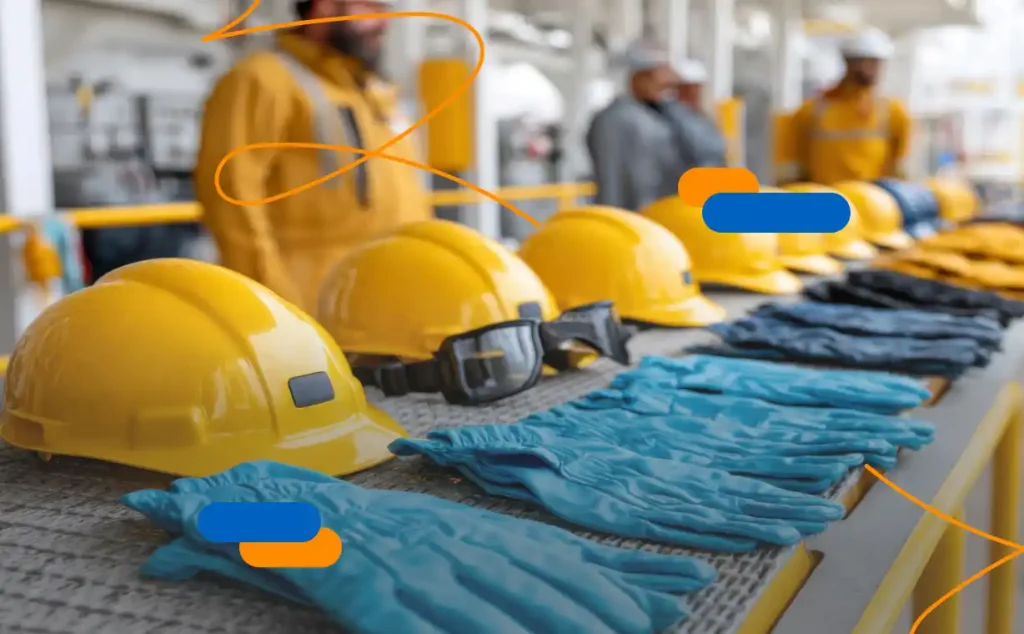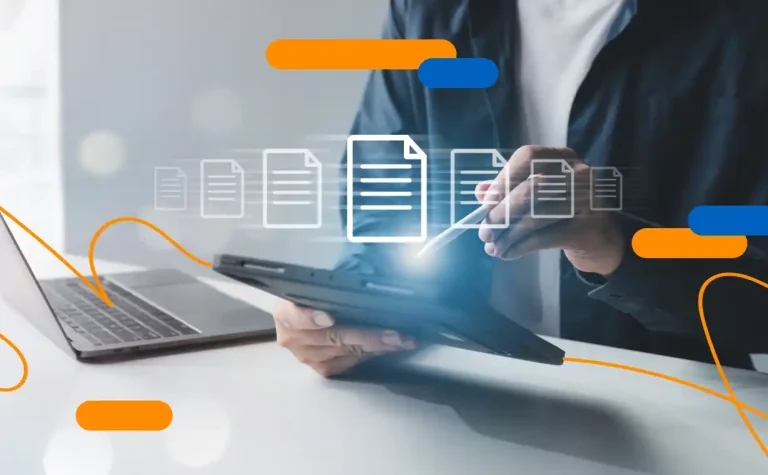Occupational risk prevention (ORP) has evolved enormously and is no longer limited to printed protocols and paper documentation. Now, companies have a multitude of digital tools at their disposal that allow them to anticipate accidents, improve worker safety, and comply with current regulations efficiently.
In this article, we’ll tell you how technology in all its forms is revolutionizing ORP management and what benefits it brings.
Keep reading!
Occupational risk prevention, beyond paper
Workplace accidents are a reality that continue to affect workers around the world every year. In 2024, in Spain alone, there were 628,300 accidents resulting in sick leave and 552,902 without sick leave, according to data from the Ministry of Labor and Social Economy. These figures show that, although significant progress has been made in terms of safety, prevention still represents a major challenge for companies and administrations. The most common causes were physical overexertion (24.97%), collisions with stationary or moving objects (40%), and contact with sharp or pointed objects (14.87%).
When it comes to management mechanisms, until recently, occupational risk prevention consisted of filling out spreadsheets and handing out protocols to employees. But this approach is now a thing of the past in some companies. In today’s society, technology has become a great ally in anticipating risks, monitoring in real time, and designing more efficient work environments.
For this reason, companies are incorporating numerous tools that enable them to take extraordinary measures in occupational risk prevention.
Technology that drives occupational risk prevention
Companies in all sectors, from logistics to healthcare, have forged close ties with these tools in order to detect risks and prevent them from becoming problems.
Here are some of them:
Predictive analysis with Artificial Intelligence and Big Data
As you know, one of the technological tools that is gaining ground not only in the business world but also in everyday life is Artificial Intelligence. Proof of this can be seen in the numerous applications that have been developed with this technology at their core, which are used on a daily basis by everyone from students to executives.
Applied to occupational risk prevention, many companies are using it to analyze large amounts of data and thereby detect risk patterns and anticipate them. The information analyzed may include accident reports, workplace conditions, working hours, task reports, etc.
Sensors that monitor in real time
Directly related to the collection of information mentioned in the first point through Big Data are sensors. In this case, they collect physical measurements or alterations in the environment in which workers are located. Among their functions, they can, for example, detect signs of exhaustion, alert to possible technical failure risks, or even determine whether the temperature of the space in which the employee is located is dangerous.
Remote-controlled equipment
As the name suggests, remote-controlled equipment refers to devices that use a wired or wireless connection to control the actions and movements of a machine from a distance. Although it can be found in many sectors, it is worth noting that this mechanism is used especially in hazardous work environments such as construction, mining, and logistics. In other cases, mechanical arms or collaborative robots may even take on tasks and work alongside people.
Management through digital solutions
Finally, the daily management of documentation has also been radically transformed thanks to digital solutions. Today, very few critical documents are signed by hand. Security protocols, prevention plans, medical examinations, and incident reports are completed electronically.
In this regard, we can now find applications that record incidents in real time or archive documentation in the cloud, although one of the most in-demand is the electronic signature. This has become a valuable tool that saves time, reduces errors, and ensures the confidentiality of employee and manager data.
Benefits for HR and OHS managers
Thanks to electronic signatures, HR and OHS managers can manage all documentation related to occupational risk prevention for employees in a fully digital manner, from employee consent to protocol acceptance.
By implementing this, companies can achieve significant improvements in agility, security, and decision-making:
- Decision-making based on real data. Decisions are no longer made at random or based on gut feelings. With analytics and various automatic reports available, managers can make decisions based on accurate and up-to-date data.
- Greater agility. Processes are automated and procedures take much less time to complete. In addition, prevention plans, risk assessments, or accident reports can be formalized from anywhere and on any device, avoiding delays in the implementation of measures.
- Reduction of errors. Automating and digitizing records and reports minimizes human error and duplication. It ensures that each document is correctly signed and filed, without the need for printing.
- Guaranteed data confidentiality. Sensitive employee information is stored securely and encrypted thanks to encryption and digital certificates.
- Complete traceability. Each document is recorded with the date, time, and validation data, which facilitates internal and external audits and provides transparency to all processes.
Viafirma integrations with occupational risk prevention software
At Viafirma, we have experience with occupational risk prevention software. Our digital solutions can be easily integrated with the occupational risk prevention management programs that companies already use, such as 6conecta. Thanks to our API, electronic signatures become just another tool in your workflows, without the need for major platform changes.
Our integrations allow you to:
- Sign digitally within the management system itself, whether for prevention plans, medical examinations, or other purposes.
- Support various types of authentication, such as OAuth2 or Basic. You can use the one that best suits your use case.
- Reduce management times for critical documents.
- Ensure regulatory compliance in your operations.
- Customize our API to any design and corporate colors, on any interface.
Although we do not integrate with third-party systems, we provide the necessary credentials for REST services and an online integration guide that can serve as a reference for the technical department.
We are your ally in the digitization of occupational risk prevention
Now you know everything that technology can bring to your occupational risk prevention system. From anticipating risks through predictive analysis to ensuring legal certainty through electronic signatures. At Viafirma, we know that every organization has its own challenges: managing large volumes of documentation, ensuring the confidentiality of sensitive information, and gaining agility. That’s why our solutions are designed to make your day-to-day easier and adapt to the way you manage prevention.
Digitizing your company’s occupational risk prevention with Viafirma is synonymous with legal certainty, regulatory compliance, and guaranteed efficiency. Contact us today and find out how we can help you transform your ORP system.




